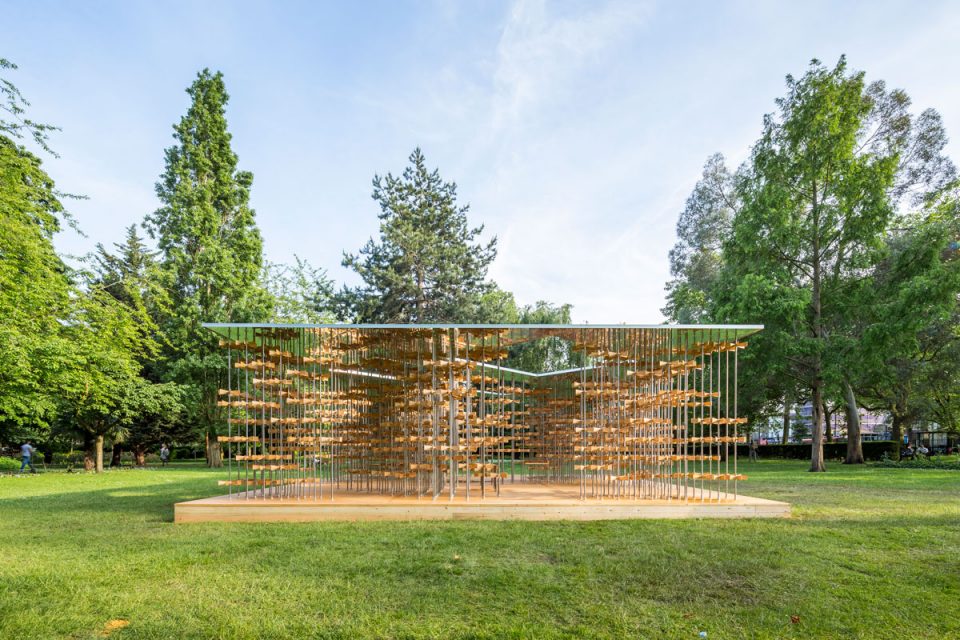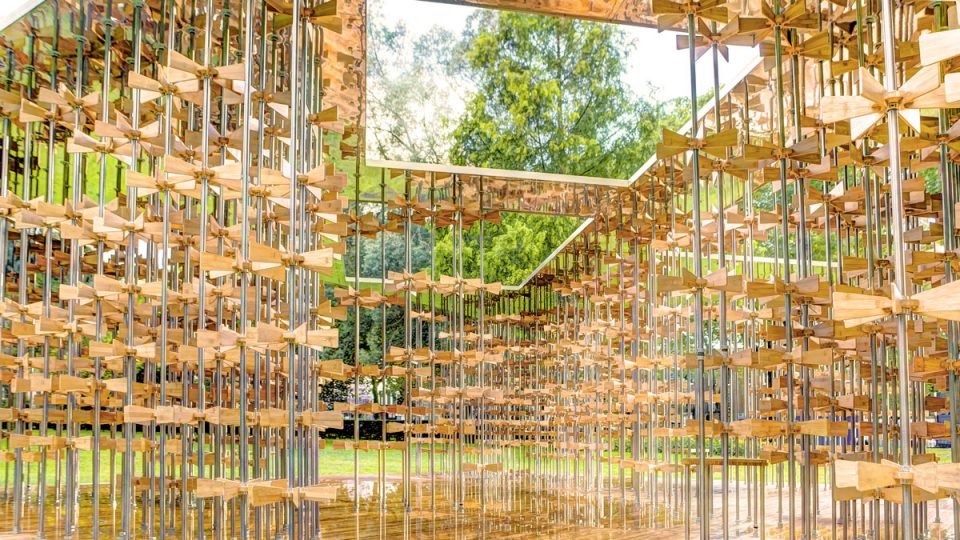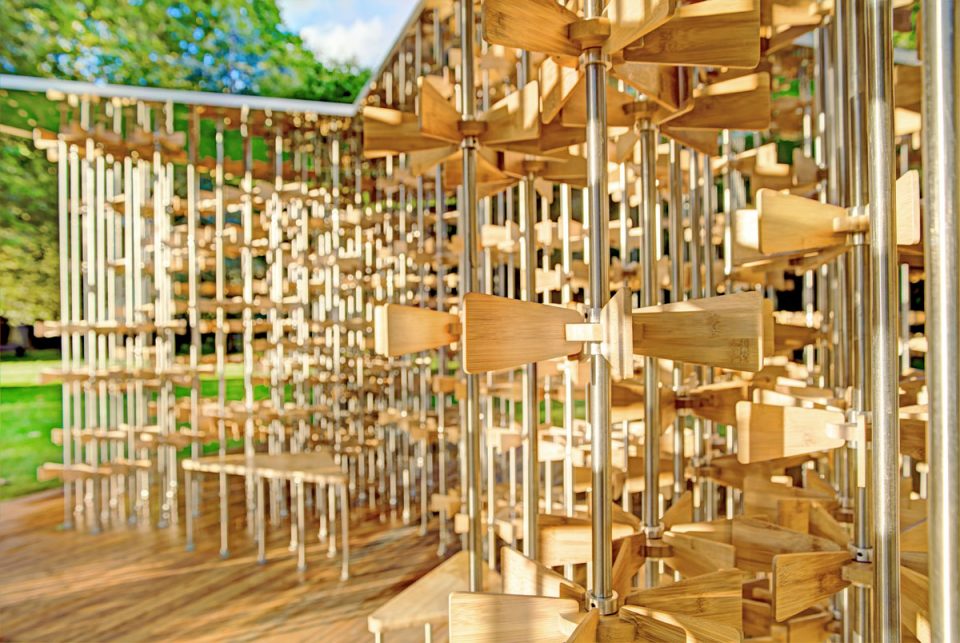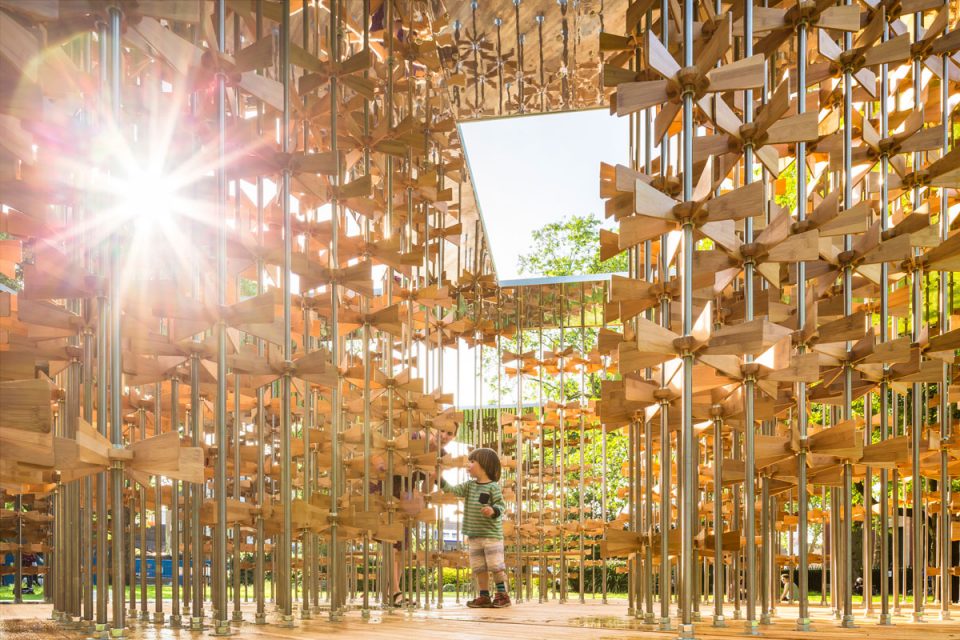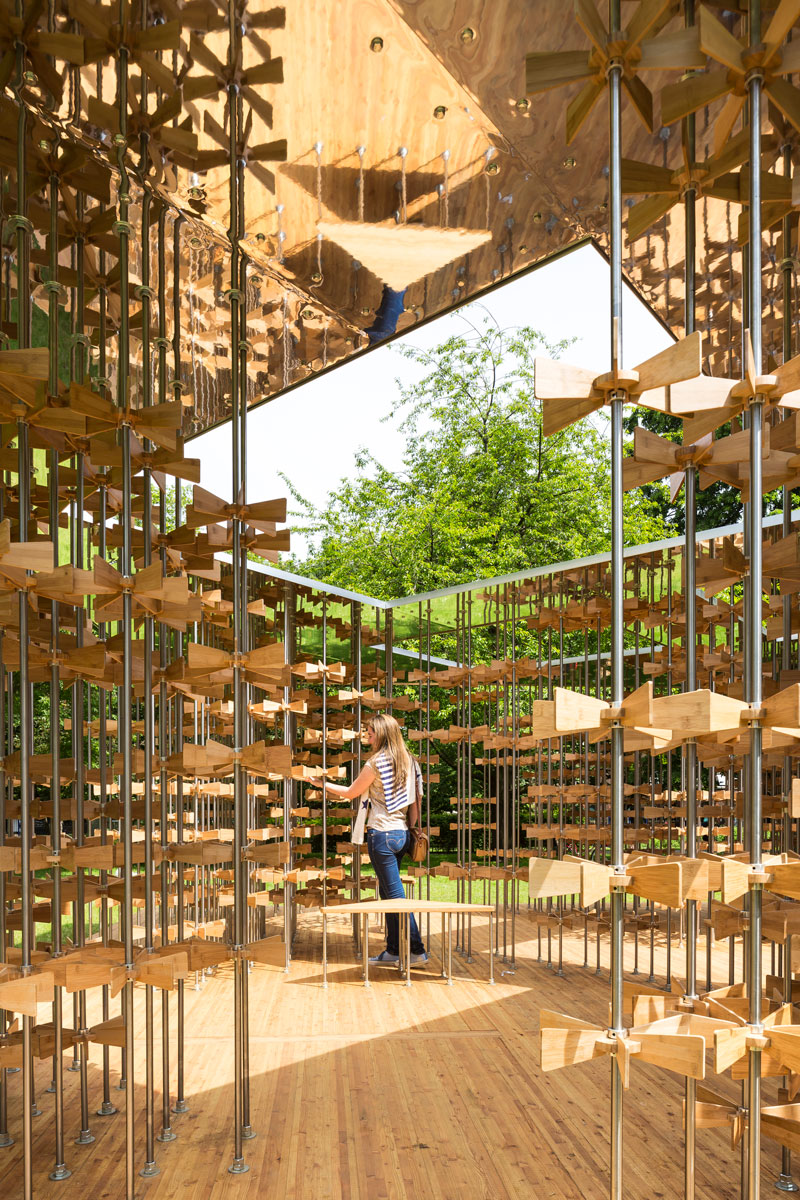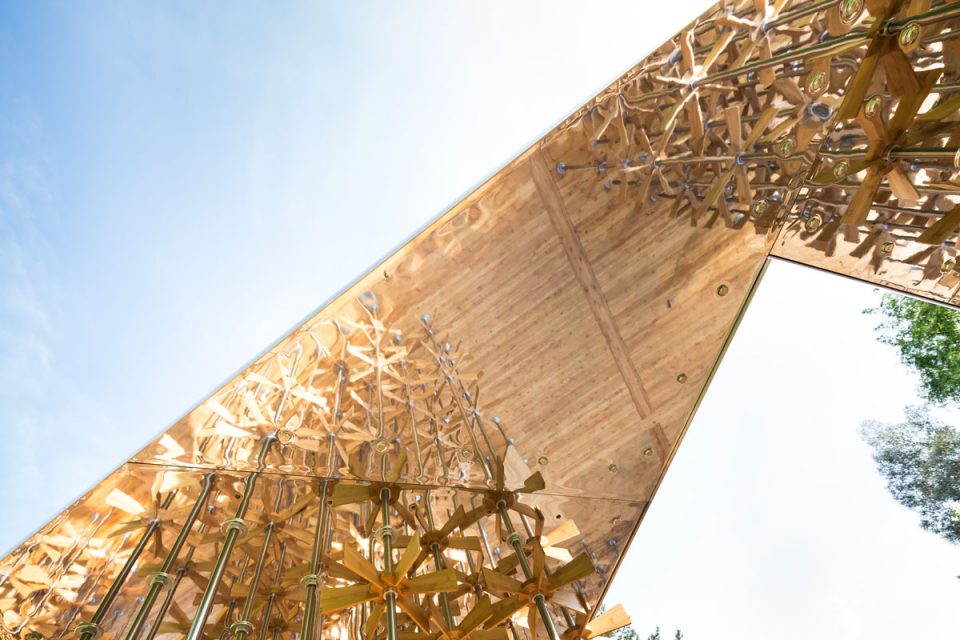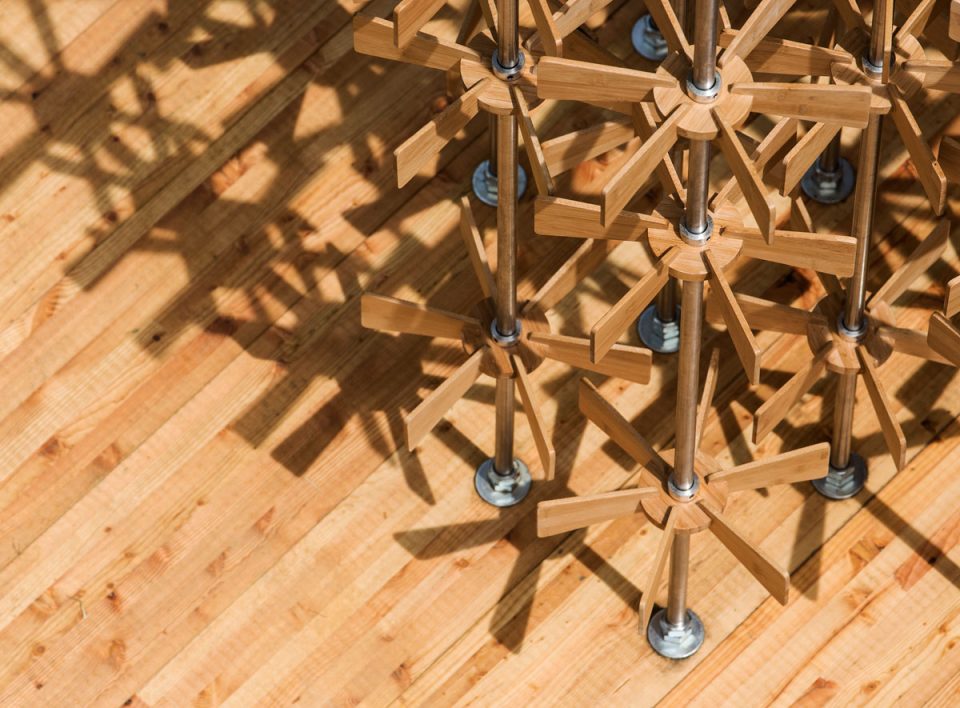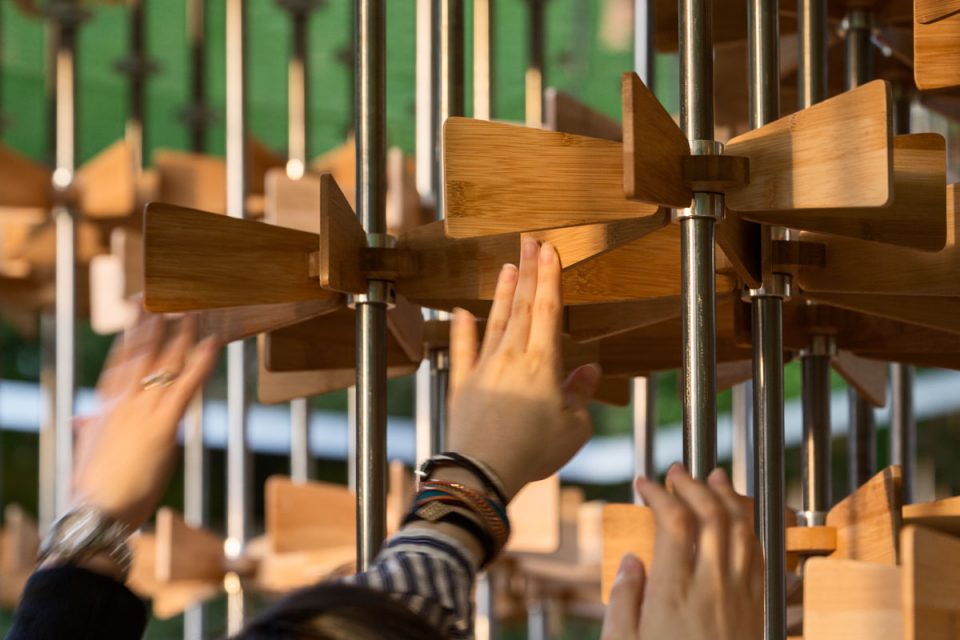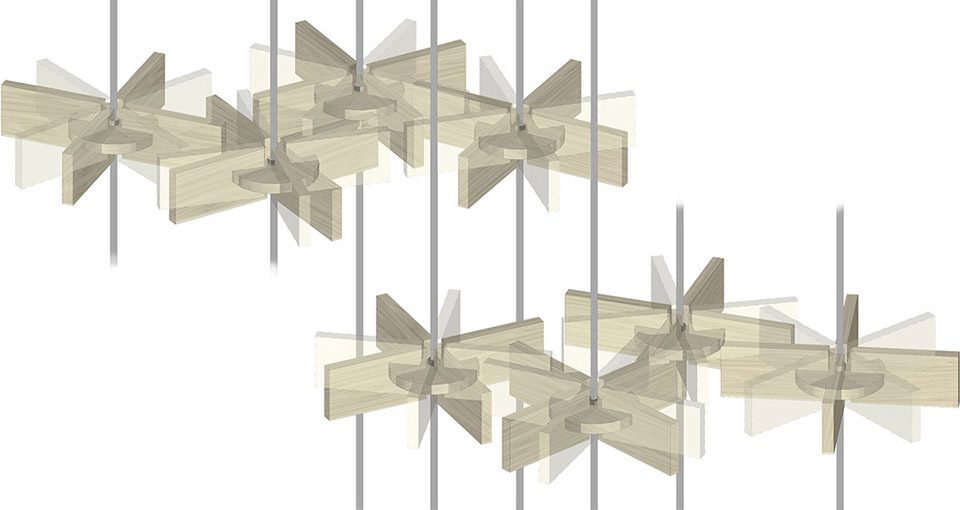设计任务书要求以“能源”为主题设计一座高度不超过4米,面积在80平米左右的独立结构。它将成为一个令人振奋的空间,一个独特的装置。前来参观的建筑师、设计师、家庭及公众们可以在其中休憩、欣赏景致,或是相互讨论有关设计的话题。
The brief for the project was to design a self-supporting structure not exceeding a height of 4 meters and area of 80 square meters based on the theme of “Energy”. It was to provide an inspirational structure or space where visiting architects, designers, families and the general public could stand, walk-through or seat around to admire, engage with each other to enjoy and share discussions about design or simply relax within the unique setting and space created by the Pavilion.
▼装置外观,the exterior view
该项目是对于社区所触发的潜在能量的探索。它重新解释了能量的概念,并认为不论是什么种族,性别,信仰或是身份,人是推动伦敦及社区最为重要的力量。个人是引发更大规模行动的单个组件。
设计灵感来自于一个经典的儿童玩具:风车。展馆由380根柱子支撑。圆柱上的每个轮子都与另一个轮子对称排布。一个轮子的转动将引发相邻轮子的运动。它象征了由个体引发的更大规模的群体反应,以及它为社区所带来的积极影响。
The project represents the exploration of potential energy that a single action in the community triggers. It reinterprets the notion of energy and supports the belief that people, regardless of race, gender, beliefs, or identity are the most prominent force that propels both London’s achievements and communities alike. The individual is the single component necessary to trigger a grander action.
Inspired by the classic children’s toy, the pinwheel, the Pavilion is a catalogue of mills upheld by a forest of pillars. Each wheel is systematically aligned to the others on the rod pillar, so a spin of a single wheel triggers movement of the adjacent wheel signifying the idea that the action of a single individual triggers a chain reaction by a greater number, positively influencing the wider community.
▼鸟瞰,bird view
▼装置内部,the interior view
▼风车细节,the pinwheel detail
▼轴测图,Axonometric projection
▼平面图,plan
▼立面图,elevation


